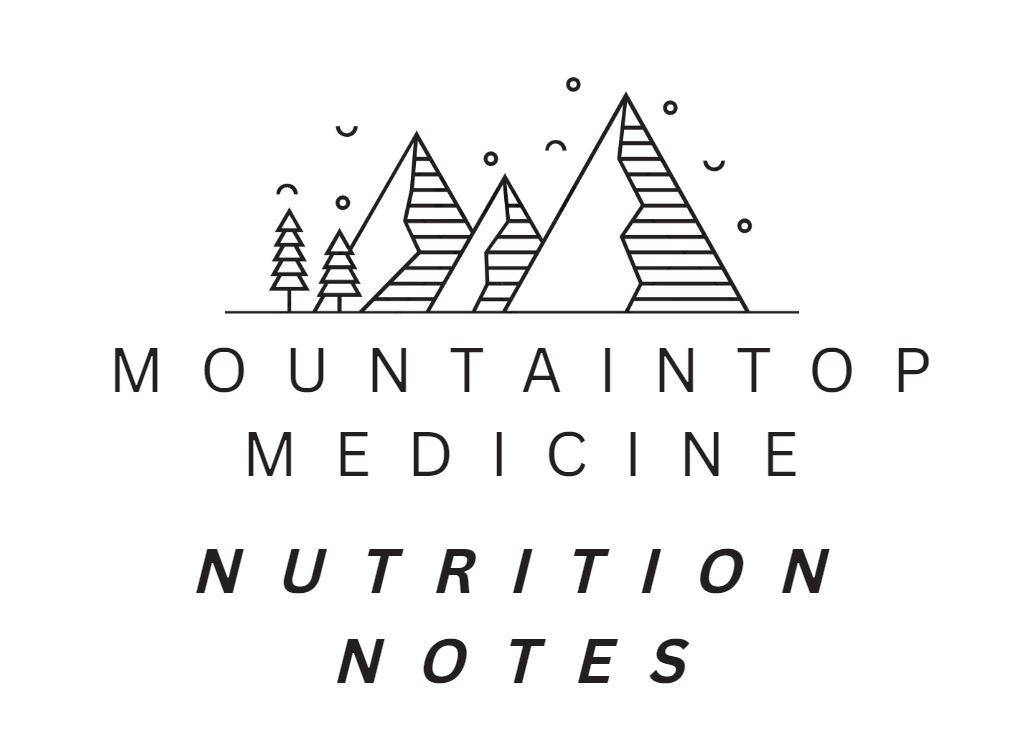Mountaintop Medicine: Nutrition Notes — It’s Best to Play it Safe When it Comes to Food

Hey there! Welcome back to Mountaintop Medicine: Nutrition Notes! In today’s article, I want to take a moment to step aside from the clinical side of nutrition and discuss proper food safety techniques to keep you and your loved ones safe from foodborne illnesses and other stresses in the kitchen.
You may or may not realize that foodborne illnesses are a cause for concern, especially when it comes to preparing meat-based dishes. Many of the illnesses caused by contaminated food can result in diarrhea, abdominal pain, cramps, vomiting, fatigue, and fever. Becoming familiar with safe food preparation methods can help reduce the risk of foodborne illnesses when cooking at home.

Leah Gardner, EPH Registered Dietitian
What are foodborne illnesses?
Foodborne illnesses are a common danger that comes from cooking. Some are caused by chemicals and toxins that contaminate food items, but many are the result of viruses, parasites, and bacteria found in food. Some of the most common include Norovirus, Salmonella, Staphylococcus aureus, Clostridium perfringens, E. coli, and Listeria.
When is food safety especially a concern?
Those at considerable risk of developing a foodborne illness include pregnant women, infants and children, older adults, individuals taking immunosuppressant medications, and those with chronic illnesses such as cancer, diabetes, liver, and kidney issues. These individuals all share a weaker immune system that is more susceptible to contracting a foodborne illness and are more likely to have a lengthier illness and undergo hospitalization.
Food Safety Techniques
The greatest concern is often bacteria contamination. There are several factors that cause bacteria to grow rapidly. Most bacteria thrive on food because they need nutrients to survive. They grow best in moist foods that contain little to no acid like vegetables, meats, and some fruits. Bacteria like to grow rapidly between 41-140 degrees Fahrenheit; therefore, it is best to store and cook foods to temperatures that range from this so called “temperature danger zone.”
Here are some best practices to prevent bacteria, parasitic, and viral contamination:
- Wash your hands thoroughly by rinsing and lathering with soap and water before and after you touch any food items, especially foods such as raw meats and eggs.
- Make sure to clean your cooking utensils and the surfaces you use to prepare meals.
- Separate foods to prevent cross contamination. Use separate utensils and cutting boards for ready to eat foods and raw foods. Meat and poultry have natural bacteria on them that you do not want to contaminate onto foods you will not be cooking.
- Cook all meat at a safe internal temperature, as listed below. Use a food thermometer to track whether the meat is being cooked thoroughly. Do not be deceived by the color of the meat- just because it appears fully cooked, does not mean it is ready for consumption.
- Refrigerate or freeze your poultry and meat as soon as you bring them home from the grocery store.
- After cooking, do not leave leftovers sitting out at room temperature for more than two hours. Bacteria are more likely to start growing after this amount of time has passed. Be sure to store them in an air-tight container in the refrigerator or freezer.
- You can also help prevent cross contamination by organizing your refrigerator and freezer so that ready to eat foods (food that do not need to be cooked for safe consumption) such as fruits and condiments are on the top shelf. Place leftovers, cheese, eggs, and cold cuts on the middle shelf. Place raw meats and poultry, fish, milk, and other dairy products on the bottom shelf. Store vegetables and herbs in the vegetable crisper often located at the bottom of the refrigerator.
- Reheat all foods to at least 165 degrees Fahrenheit for 15 seconds within two hours of cooking for safe consumption.
- Throw out any perishable food that has been refrigerated for more than 7 days including all ready to eat foods and leftovers.
Internal Cooking Temperatures
Cook foods to the following temperatures to ensure they are safe to eat:
Beef, pork, lamb, and veal: 145 degrees Fahrenheit
Fish: 145 degrees Fahrenheit
Ground beef/veal/lamb: 160 degrees Fahrenheit
Egg dishes: 160 degrees Fahrenheit
Poultry (chicken, duck, turkey), ground poultry, and game: 165 degrees Fahrenheit
Leftovers: 165 degrees Fahrenheit for 15 seconds within 2 hours
FDA Food Code Temperatures
Keep foods held at the following temperatures to ensure they remain safe to eat until they reach their expiration date:
Store frozen food at 0 to –10 degrees Fahrenheit
Store cold food below 41 degrees Fahrenheit
Transport hot foods at 165-175 degrees Fahrenheit
The Truth on Expiration Dates
keep in mind that the terms “best by” and “sell by” are simply when retailers must sell their product for optimal freshness. Only infant formula has actual expiration dates. Everything else you can check yourself by smelling, tasting a small bite, and looking for mold to determine if it has truly expired.
Whether you are an avid chef at home or not, it is important to follow these food safety precautions to prevent unwanted illness. Remember I am now offering outpatient nutrition counseling services at Estes Park Health. If you are interested, please contact your health provider for a referral. If you have any questions or if there are any nutrition-related topics that you would like me to discuss here on Nutrition Notes, please reach out at LGardner@EPH.org!


